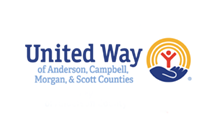Facing the real needs in our schools
We get a lot of questions about Anderson County’s demographics and socioeconomic structure and how they relate to the needs of our residents. In an effort to better address these needs, we are starting a series that will illuminate the unique challenges and opportunities that many people face in our community. Since it’s back to school time, we are focusing first on our children and how data can sometimes mask a growing need.
Some of the most oft-cited data about school children is rates of free and reduced lunch. Let’s take a closer look at that data and what it actually tell us. In Tennessee, schools collect data on two poverty groups: Economically Disadvantaged and students who qualify for free and reduced price meals.
Economically Disadvantaged students include those who qualify for and receive food stamps, runaways or foster children, homeless children, and migrant families. During the 2018-19 school year, 31% of students in the Oak Ridge school system were considered Economically Disadvantaged.
Students who qualify for free and reduced lunch have a household income that falls at or below limits set out in the federal eligibility income chart. Three schools in the Oak Ridge School District currently receive grants that allow them to run at 100% Free and Reduced – this means that more than 50% of their students qualify for the program based on income. However, the entire district percentage is calculated based only on the number of students who qualify based on income. This means that the district percentage is not skewed by those schools functioning as 100%.
Last school year, 49% of school children in the district qualified for free and reduced priced meals.
While 49% seems like a high number, it’s actually quite a bit lower than previous years. That seems like progress, right? A lower percentage means fewer kids and families need assistance. Unfortunately, that’s not the case.
The guidelines changed. Their income didn’t.
This year, the federal eligibility income qualifications were drastically modified, which means families who had previously qualified now make too much money to be eligible. To be clear, their income has not changed, but they now have to stretch their incomes even thinner because their children can’t participate in the free and reduced lunch program.
Another significant factor contributing to that 49% is simply that qualifying families don’t turn in the forms. School administrators know this because the number of forms coming in from qualifying families in the elementary schools drops significantly going into the middle school – and then even more going into high school.
So what does this mean, practically? It means that there is still a huge population school kids and their families who are not making enough money to support their basic needs. Who have lost a valuable, sometimes critical resource without the means to replace what it supplied. Far from having fewer families in need, that 49% means we have many more kids and families who need the support of their community.
What can we do to come together with our schools and support these families? Make an effort to understand the struggles and limitations of the parents and families in our schools. Assist those families in finding resources (this can include referring them to United Way or our website where we host a comprehensive resource manual and food pantry / community meals list). Attend some of the community meals at churches around the community and support them with donations or through volunteering! Help us keep our Blessing Box (located in the Robertsville Baptist Church parking lot, next to Robertsville Middle School) full of hygiene products, cleaning supplies and other items not purchasable with food stamps. Tell us about any other barriers you believe families might be facing that we can help address – we can’t provide support without knowing the needs. And let families know that they should fill out the form for free and reduced meals – they might qualify! For more information about eligibility or help with the form, contact the ORS Central Office (865-425-9001) or Pupil Services (425-9009). Families can apply at any time during the year, especially if there has been a change in income at home.
Watch for and get involved in community support events where we will provide assistance filling out forms, providing resources, and helping families find the help they need.
Our is a strong, dynamic, educated community. Thank you for your compassion and for providing a hand up to those who need it the most. We look forward to providing more information in the coming weeks and welcome all questions, concerns and conversations!

